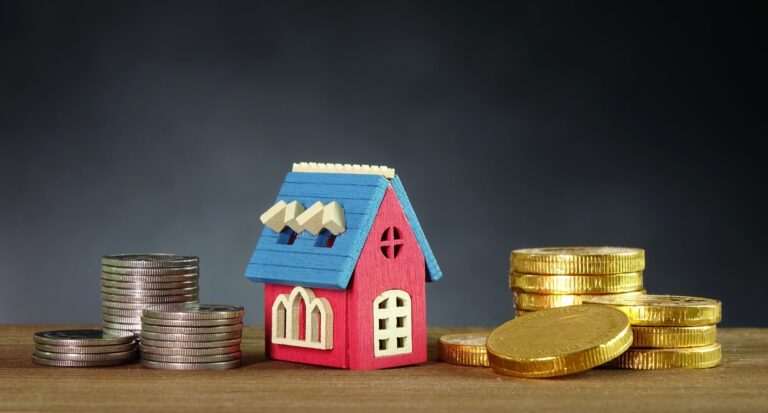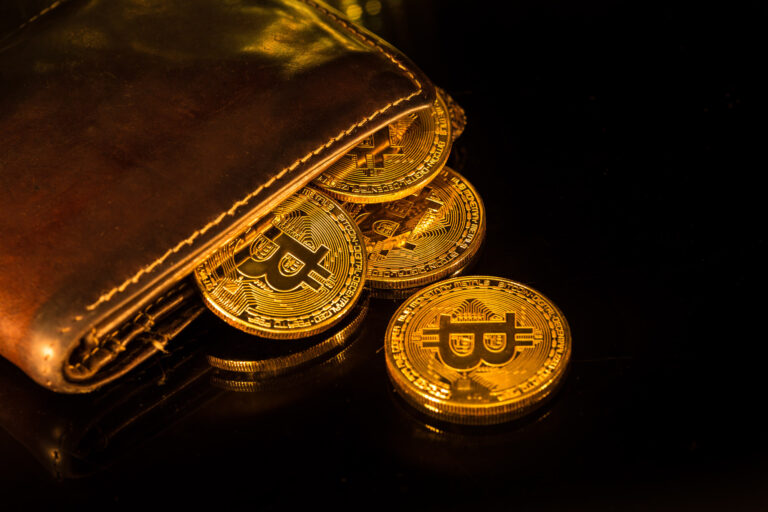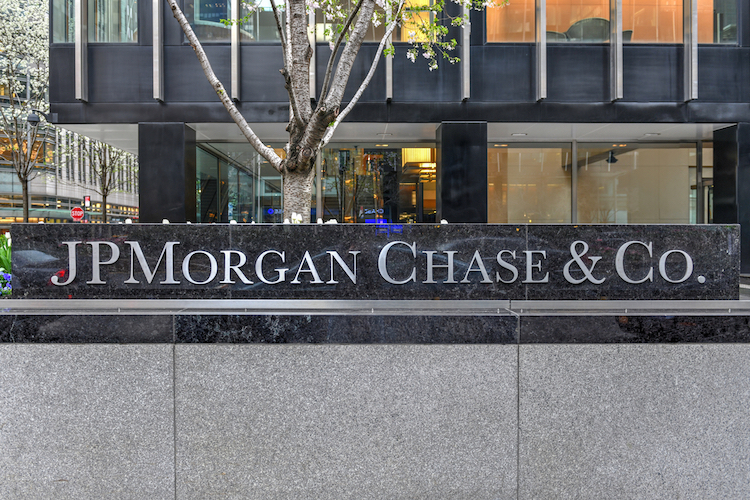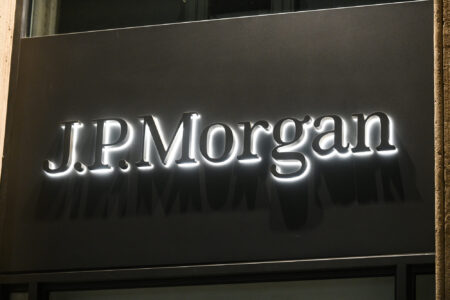Wall Street has done it again. Just over six months after BlackRock and others submitted their regulatory filings for a Bitcoin Spot ETF, they have received approval. Bitcoin has now arrived in the highest financial circles.
But what few know is that cryptocurrency ETFs are just a stepping stone to the ultimate goal - tokenization. This was stated by none other than Larry Fink himself, CEO of BlackRock. The company is the most important investment firm of our time and has set its sights on tokenized assets.
Everyone is talking about tokenization, but what exactly is it?
According to Fink, tokenization is the next evolution in the financial world. The process is intended to create a new generation of securities and other assets. But what will this evolution look like? From the end-user's perspective, this generational shift may be almost imperceptible. An asset is an asset. What will change in the future is how assets are accessed, traded, recorded and settled. Blockchain technology brings significant innovation in this regard. It serves as a tamper-proof, transparent and shared database for the assets of the future. This creates efficiencies and synergies that the traditional financial infrastructure has not been able to offer.
By issuing known assets such as fiat currencies, stocks, bonds, loans, real estate, commodities, artwork, luxury goods, or even intellectual property on a blockchain, they receive a digital counterpart. This is a blockchain-based digital token. This token, in turn, represents the underlying tokenized asset - also known among crypto enthusiasts as a tokenized real-world asset, or simply RWA.
What are the benefits?
The benefits of tokenization are particularly compelling when considering the challenges of today's financial system. Tokenization can increase efficiency by enabling real-time settlement. Because posting and settlement can occur almost instantaneously, especially in post-trading, financial participants no longer need to hedge against delays (T+1 or longer). Assets are delivered with settlement. Friction losses are eliminated and counterparty risks can be minimized.
Counterparty risks that currently arise from proprietary silo databases and the associated opacity can also be reduced. Because of the transparency of public blockchains, tokenized assets can be verified by anyone in real time. This opens up the possibility of assessing the quality of collateral and better estimating potential risks. Transfers of RWAs occur on-chain, allowing for easy reconciliation of accounts and account holders in the event of disputes.
Transparency also promotes accountability. All transactions settled on the blockchain are always publicly visible and therefore traceable. This allows compliance rules to be embedded directly into tokens and applications. At the same time, KYC tools can be implemented to protect privacy in accordance with relevant regulations.
Unique features of the blockchain technology
Fractional ownership of real assets is possible today even without blockchain. With blockchain, however, even smaller divisions are possible. In particular, tokenization increases liquidity for historically illiquid markets and makes them more accessible. Investors who were excluded from such investments through traditional channels can now gain access. For RWA issuers, there's a larger total addressable market (TAM) because blockchains are a global phenomenon.
Another major benefit is cost reduction. Managing real assets through smart contracts reduces the need for intermediaries. Initial results confirm this. Once all relevant aspects, in particular the future secondary markets of an RWA ecosystem, are in place, these cost savings will be fully realized.
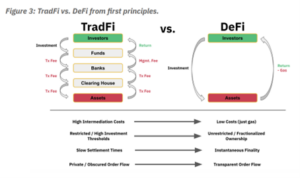
Differences between traditional and decentralized financial markets / Source: Medium
RWAs - A market with massive potential
Tokenized assets represent a massive growth market; this now seems to be widely accepted in the financial world. Estimates of the potential size of this market vary. For example, crypto ETP provider 21Shares estimates in a recent report that the market value of tokenized assets could be between $3.5 trillion and $10 trillion by 2030.
The consulting firm Roland Berger agrees with these forecasts and believes that growth to at least $10 trillion by 2030 is possible. The Boston Consulting Group sees even greater potential. In one of the first research reports on the subject, published in 2022, the company predicted a fifty-fold increase between 2022 and 2030. Tokenized assets are expected to account for 10% of global GDP, or $16.1 trillion, by the end of the decade.
Tokenized bonds have shown the strongest growth to date. Currently $853 million are held in tokenized bond products, up from just over $100 million at the beginning of January 2023. This growth is likely due to increased interest rates on government bonds. Most of these tokenized bonds are based on US Treasuries, which are currently yielding up to 5%.
Tokenized Silver Granules from Switzerland
The success of tokenized bonds may well foreshadow the rest of the tokenization market and create catch-up potential for other RWAs. One area of focus is commodities, especially precious metals such as gold and silver. One Swiss RWA project focused on silver is Denario AG. The company is the issuer of the Denario Silver Coin (DSC) - a token backed by the tangible value of physical silver granules.
Why silver, and why backed by granules? Silver has historically proven to be a safe store of value. It remains a popular store of wealth today. However, compared to gold, silver is potentially significantly undervalued. The gold/silver ratio - a measure of the ratio of the price of gold to silver - is currently at 85. For most of human history, this ratio has been much lower (around 1 to 12 or 13), suggesting that silver is historically undervalued relative to gold.
Silver is also a widely used industrial metal - much more so than gold. Ubiquitous devices such as smartphones (0.305g) or laptops (0.46g) as well as emerging products such as photovoltaic systems (100g) or electric vehicles (95g) contain silver. Silver will therefore remain one of the most important industrial metals in the future. Denario focuses on silver granules because, in addition to being used for jewelry and coins, they are easier to use in industrial applications, take up less space and are easier to transport than silver bars. In general, the production and handling costs of granules are expected to be lower than those of silver ingots.
What are the benefits of Denario?
One DSC is backed by one ounce of silver granules - so the value of one DSC is exactly the same as one ounce. The silver granules have a fineness of 999.9 and are sourced from certified refineries. Importantly, they are physically stored by Swiss custodians in a duty-free warehouse in Switzerland. The custodian also verifies the underlying silver granules twice a year.
By being domiciled in Switzerland, Denario joins many other RWA projects that also call the Alpine republic home. In total, Switzerland is expected to host 9% of all global RWA projects. This is likely due to its regulatory clarity, a community with significant blockchain expertise, and connections to the traditional financial world - factors that Denario can also benefit from.
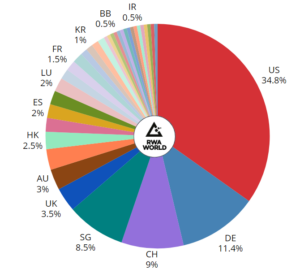
Number of RWA Projects per Jurisdiction / Source: RWA World Report
Thus, the Denario token is embedded in a solid legal framework and has a clear regulatory status. DSC is recognized as a registry right (investment token) and is fully compliant with Swiss financial market regulations as a Real-World-Asset-Token (RWA) fully backed by physical silver. This makes it easy for traditional investors to understand. DSC allows them to participate in the crypto evolution without needing a deep understanding of complex digital intricacies. At the same time, Denario aims to make the traditional store of value accessible to future generations - younger generations who are likely to hold their assets primarily in digital form.
Leading Ethereum ecosystem in RWAs
From the perspective of individual token holders, DSC ultimately increases their choice by allowing them to conveniently transfer their silver via a public blockchain network. Denario currently uses the Polygon blockchain, but is considering expanding the project to Ethereum. Along with Ethereum, Polygon is one of the most prominent RWA blockchains. Together, these networks host 50% of all RWA projects. In addition, all of Denario's smart contract features, including the entire source code, have been thoroughly audited by the renowned smart contract auditing firm CertiK.
The future potential of RWAs is enormous. This is increasingly understood by traditional financial players. With its solid legal framework, Switzerland is ideally positioned to benefit from this development. Denario and other RWA projects will be the driving forces behind this development.

